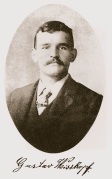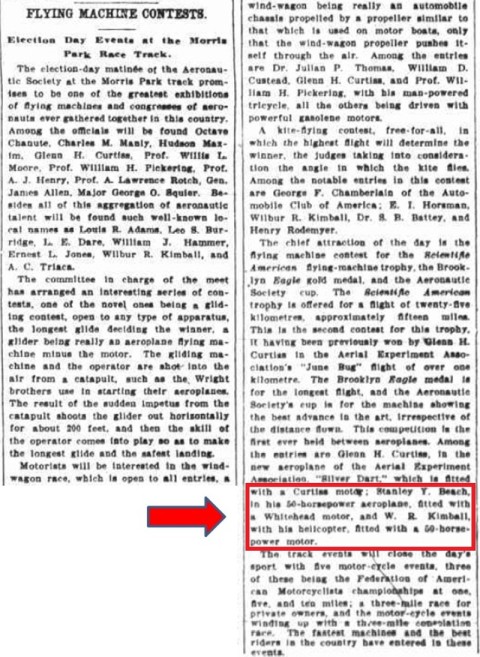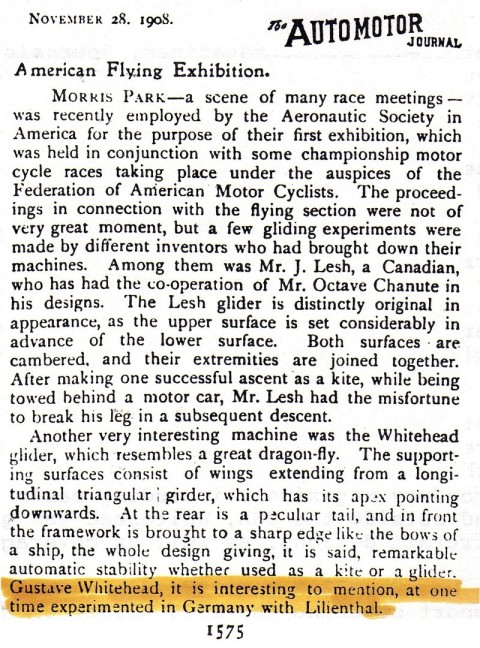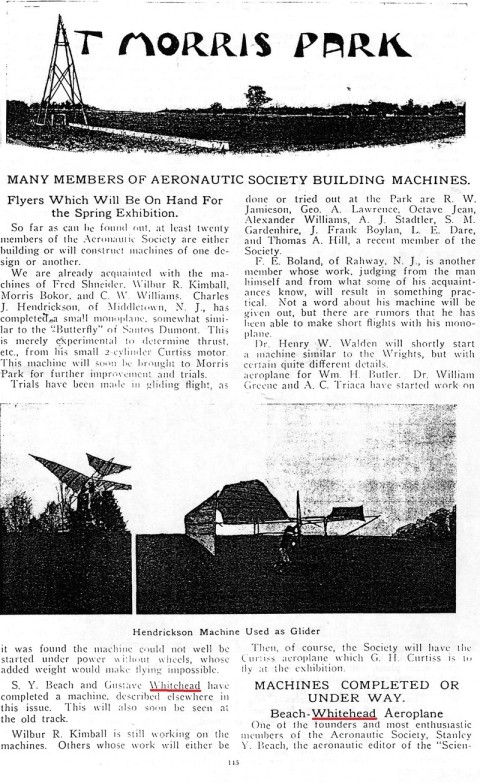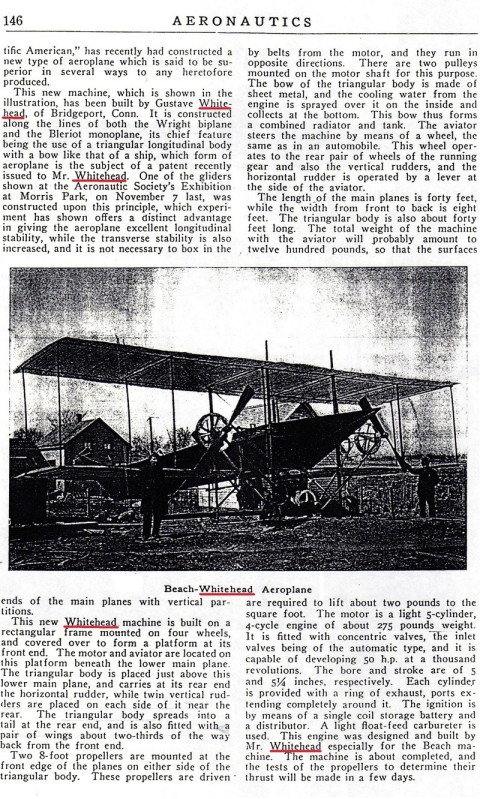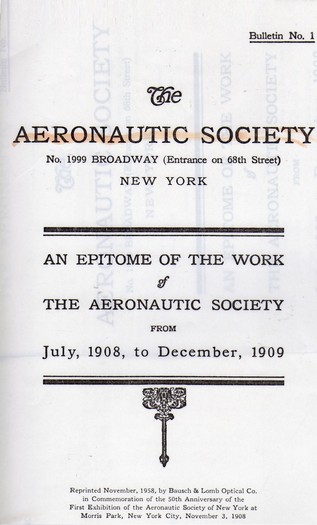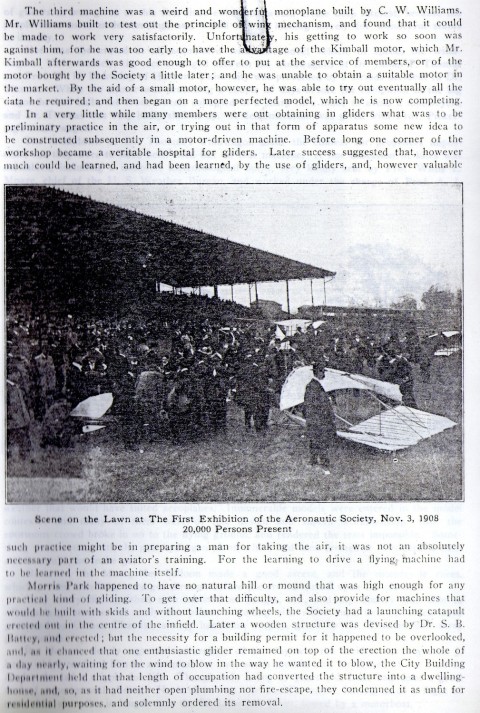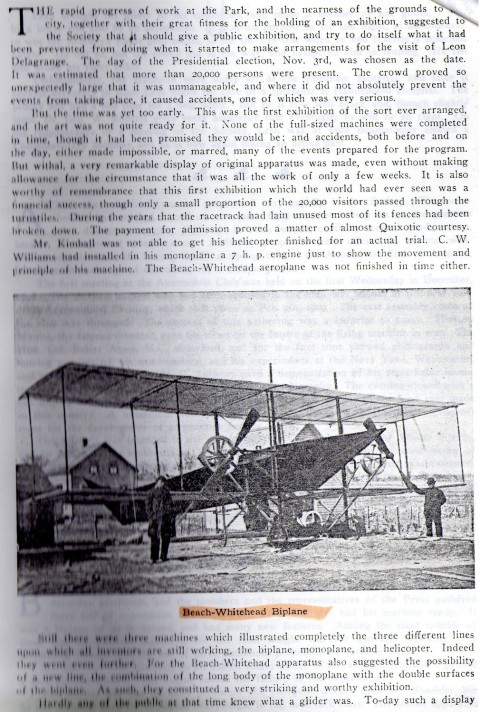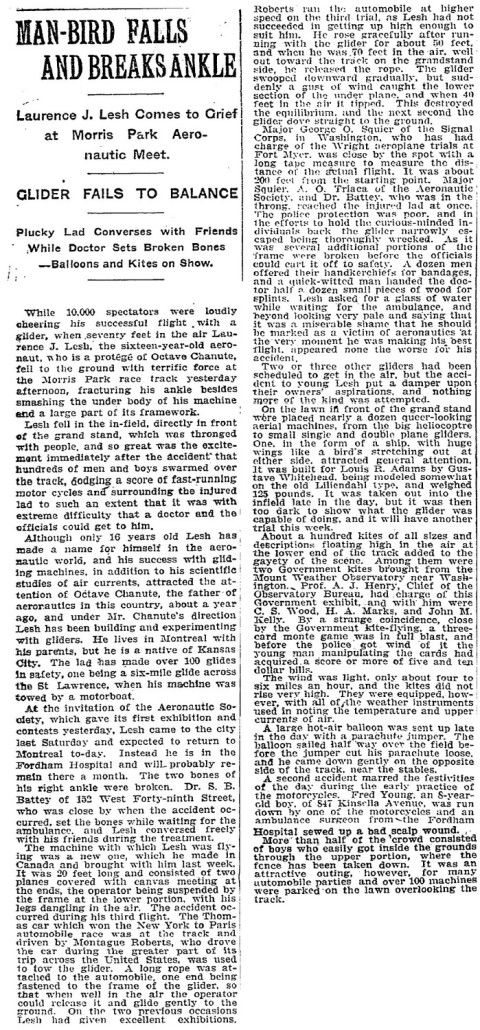Whitehead Aircraft at Morris Park, 1908
Three Whitehead-built aircraft were on display at Morris Park:
1. Adams Glider
2. Booth Glider
3. Beach-Whitehead monoplane
The Beach monoplane wasn't finished in time for the event. The Booth glider was damaged during preparations and - due to another competitor's crash - daylight ended before the Adams glider could be launched.
The following publications describe the event:
The Aeronautic Society of New York and the Birth of American Aviation, 1908-1918, Crouch, T., 1912 (draft for NY Magazine)
Eight gliders would compete for a pair of silver cups offered by Octave Chanute [ ]:
- Louis R. Adams – flying a monoplane built by Gustave Whitehead
- Morris Boker – biplane of his own design
- Charles M. Crout – biplane built by D.L. Braine
- C.J. Hendrickson – biplane of own design
- E.L. Jones – biplane built by C. and A. Wittemann
- A.C. Triaca – monoplane built of own design
- A.C. Triaca – biplane of own design
- A.C. Triaca – triplane of own design [ ]
The Geniophile Company would present a gold medal to the safest powered flying machine in the competition, while the Aeronautic Society offered a silver cup to the machine representing the most significant advance in the art of flying [ ]
Gustave Whitehead announced plans to enter the competition with an aircraft powered by a 50 hp engine of his own design. [ ] Whitehead was, at the time, a well-known builder of engines and airframes.[ ]
The 20,000 spectators who arrived at Morris Park on November 3 surprised and overwhelmed the sponsors of the event.[ ]
Sixteen year old Lawrence J. Lesh was the first to try [ ]. The craft he brought to Morris Park was a biplane hang glider with a twenty foot wingspan.
Howard Booth was next to try. His glider, built by fellow Bridgeport, CT resident Gustave Whitehead, was to have been towed aloft by an automobile driven by a Mr. Peter Fisher, but was damaged while being prepared for flight. Louis Adams then announced that he would fly his Whitehead glider. His machine, “built like a ship, with huge wings like a bird’s stretching out at either side,” a New York Times reporter noted, “ attracted a good deal of attention.” By the time he was ready to fly, however, dusk was falling and the trial was cancelled. The Morris Park meet was at an end.
New York Evening Post, Oct. 31, 1908, p.9
The Automotor Journal, Nov. 20, 1908, p.1575
Aeronautics, April 1909, Vol.A, No.A, p.145
Aeronautic Society of New York, Official Event Summary Report
"The Beach-Whtehead aeroplane was not finished in time either. [T]he Beach-Whitehead apparatus also suggested the possibility of a new line of combination of the long body of the monoplane with the double surfaces of the biplane."

